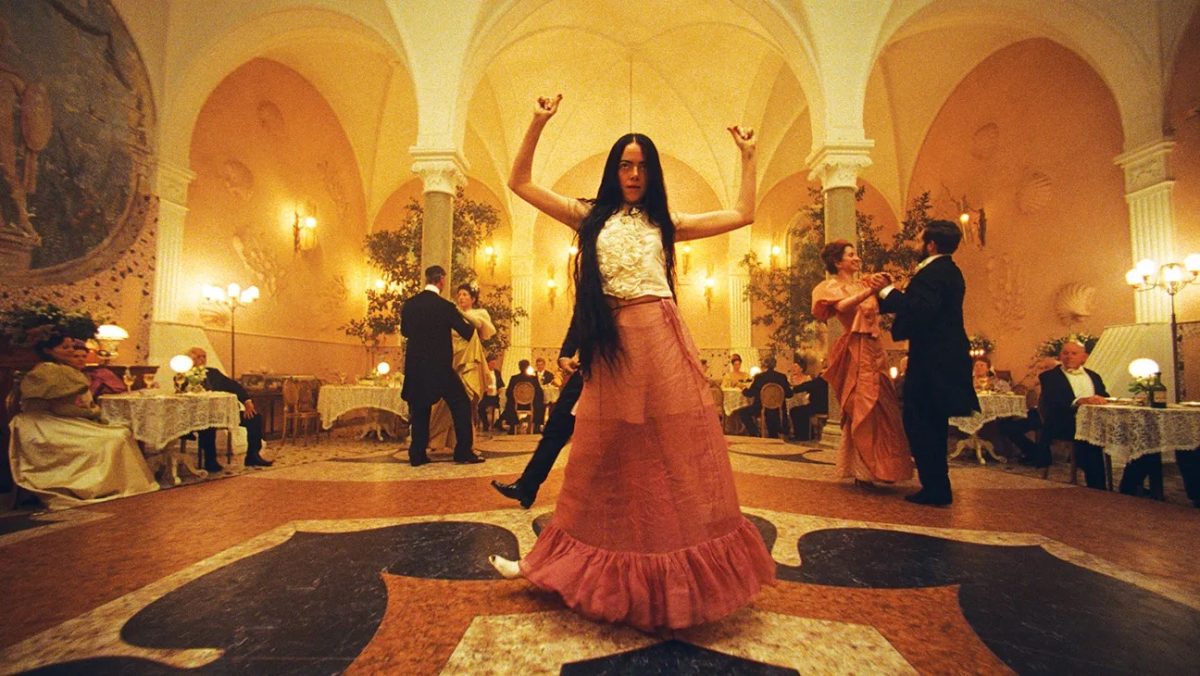At the end of a long day at school or work, you realize that a refreshing beer would hit the spot. As you drive home, your mind wanders to the thought of the cold beer that will soothe the nerves and relax the soul. You can almost hear the delightful “”ssstt”” as the bottle cap flies off and tinkers around the counter. The slight scent of the precious yeast-based brew reaches your nose. You can almost imagine the cool feel of the bottle resting carefully in the palm of your hand while you kick off your shoes, sit in your favorite chair and just unwind.
You finally reach your home and you dash inside, ignoring the pile of bills and leaping over the cat that decided it wants attention today. You reach the smooth handle of the refrigerator door. You fling it open and then just as you are about to reach inside for a beer, you face a moral decision. A dilemma. A quandary, if you will. Will it be the Lady or the Tiger? Definitely a predicament.
What beer do you choose?!
Now, if your home is anything like mine, there is usually a wide selection of beer to choose from and I am often left wondering whether I should reach for the Karl Strauss Amber Lager, the Newcastle or the Guinness. So many choices.
But there’s not much time to decide as your mouth begins to dry out in anticipation of this cool beverage. You are thinking to yourself, what should I drink? Which one is better? Why?
You might say to yourself, “”It’s just beer.””
But no, it’s not “”just beer.”” Every beer has its own unique style, texture and taste.
And just in time for the Sun God Festival, where many revelers will partake in the mass consumption of alcoholic beverages, The Guardian staff members have taken the liberty of conducting painstaking research in judging the overall quality and taste of various beers.
We matched up various beers and rated their quality against each other. The beers were then individually rated on a 1 to 10 scale, 1 being piss poor, 10 being the best of the best and 5 simply being an average beer that wouldn’t be too bad on any given night.
The results are below — happy drinking!
BEER VS. BEER
Asahi vs. Sapporo
Asahi: 8
Sapporo: 5
The two beer giants of Japan square off in an epic battle of taste and overall quality.
But it appears that Sapporo falls short in this battle. Sapporo has a lighter texture and a slightly more watered-down taste. The bitterness of the initial flavor is much like the initial taste of Budweiser: It’s not that bad, but you kind of have to force it down.
The Asahi, on the other hand, proves why it is touted as “”Japan’s No. 1 Beer.”” The overall taste is very dry and smooth. There is no bitter taste or aftertaste, and it is thicker overall. The darker quality of this beer gives it more flavor and character. This is truly “”the beer for all seasons,”” as it boldly states on the label. Both can go well with any meal, especially sushi. The Sapporo, although lacking in overall quality, can be a refreshing drink after a heavy meal, but the Asahi can fully compliment any dish at your local Japanese restaurant.
— Joseph Lee
Killarney’s Red vs. Foster’s
Foster’s: 5
Killarney’s: 7
The duel between Killarney’s Red Lager and Foster’s Lager ended with the U.S. product thoroughly embarrasing the Aussie brew in the categories of presentation, smell and taste.
While Foster’s does have the advantage of coming in a pint-sized can, the gaudy blue and gold behemoth doesn’t compare to the look of the Killarney’s bottle, nor to the way it comfortably fits in one’s hand.
Smelling the Foster’s beer brings back unpleasant memories of cheap keg beer, while a whiff of the rich, deep aroma of the red lager resulted in a heightened anticipation of drinking the brew.
The smooth taste of the Killarney’s lager hits at the back of the throat, where all good beers should register, and carries out the promise made by its smell. Foster’s, on the other hand, had a somewhat lighter taste, which becomes more apparant as the bottom of the can approaches. Foster’s receives a score of 5 out of 10 due to its lack of spectacularity, despite its advantage when drinking mass quantities. Killarney’s earns a score of 7, hurt by the fact that it’s an Anheuser-Busch product, but it has the benefit of being the perfect beer to enjoy with dinner or during a walk along the beach. Just make sure it’s not Mission Beach or Pacific Beach.
— Isaac Pearlman
Boddington’s Pub vs. Guiness
Guiness: 9
Boddington’s: 8
In an age when Ireland and Britain seem to tip-toe around each other to create some semblance of peace, I have put a solid two-fingers up (the equivalent to the middle-finger here in the states) to any political repercussions.
I have pitted Manchester’s Boddingtons Pub Ale against Dublin’s Guinness in a battle of beers. This is the next best thing to an England versus Ireland football match.
Both drinks have a deep history spanning over 200 years. The construction of each can is impressive as they both contain a “”draught”” system that closely recreates the taste of a Boddingtons or a Guinness straight out of the tap. Shake the can around a little bit and you can hear the little widget click around.
Guinness is a top notch beer with that thick, foamy taste that we have come to know and love. The creamy taste is surprisingly easy to drink and goes down smooth with little bitterness. But if you rarely drink beer or are used to lighter beers, you may want to stay away from this until you have developed your beer-drinking chops.
Boddingtons Pub Ale has a similar creamy texture but the taste is slightly lighter. It is also a bit sweeter with a hint of banana to it. Much like Guinness, Boddingtons is not as bitter as some beers can be.
However, the Irish comes out on top. Guinness packs a darker and thicker punch that is more satisfying in the end. Never experienced Guinness? Grab one and enjoy. Cheers!
— Joseph Lee
Miller Genuine Draft vs. Budweiser
Budweiser: 4
Miller Genuine Draft: 5
Budweiser and Miller Genuine Draft: One wonders why these relatively low-quality beers are worth bothering with. They don’t offer the rich taste and flavor of many other beers that can be found at a fairly comparable price. The taste of both of these beers is virtually indistinguishable because each has a thin flavor that is reminiscent of watered-down urine. Trust me.
The redeeming factor of these two domestic beers is that they are inexpensive and better than Natural Ice, although I know that some may disagree. And of course, after you force down about four or five bottles of Budweiser and MGD, you stop caring what it tastes like.
Still, the beer connoisseur should avoid these two brews at all costs.
— Joseph Lee
Dos Equis vs. Corona
Dos Equis: 7
Corona: 5
In the battle of the cervezas from south of the border, Dos Equis went house on Corona and cruised to the easy victory. With its full, smooth taste, Dos Equis simply overpowered the lighter, weaker taste of Corona.
Dos Equis is the most solid beer to come from our neighbor from the south. It is a darker lager that embodies a lot of strong qualities for a beer. It is definitely a beer that you can drink a lot of and not get completely sick of after only a few beers.
Corona is simply the weaker beer. While it has become popular in the United States for its lightness and lack of a true beer taste, it remains a weak beer. It must be supplemented with salt and lime to get a desirable taste. Any beer that needs a supplement is simply not up to par. The limeless taste of the beer can get old after only a few.
The scores indicate that it was a closer than it actually was. Dos Equis was the first beer out of the gate and jumped out to the early lead. It was cleaning house until a convoluted pallet and the effects of drinking the Dos Equis first contributed to Corona scoring as well as it did later.
It was actually a solid knockout for Dos Equis, which should be considered by anybody who is looking for a solid import that they can enjoy for the entire day that is Sun God.
— Josh Crouse
Heineken Special Dark vs. Newcastle
Heineken Special Dark: 7
Newcastle Brown Ale: 9
Most are familiar with the green bottle of Heineken, that popular beverage brewed in the Netherlands. However, most are not as familiar with Heineken Special Dark, which can be found in a dark brown bottle.
Newcastle, on the other hand, is a beer that needs no introduction and has been a favorite for many across the Atlantic Ocean and here in the United States. The Special Dark and the “”Brown Ale”” seem to be a worthy matchup.
One may be a bit wary of Heineken’s dark beer, but if you are a skeptic you will be in for a surprise. The Heineken Dark obviously offers a slightly darker taste but has a slightly bitter aftertaste. The quality of the beer is definitely thicker and more satisfying than the taste of the original Heineken.
The Newcastle also provides a similar dark taste but the aftertaste is smoother than the Heineken Dark. Newcastle almost has a smoky taste to it and the entire experience of Newcastle is nearly perfect. The quality is not too dark, but it is by no means as thick as a pint of Guinness.
The relative newcomer, Heineken Special Dark, is a quality opponent but it falls short behind the deep history of Newcastle that was originally established in 1770.
Legend claims that it wasn’t tea the American rebels tossed into Boston Bay.
— Joseph Lee
Karl Strauss Amber Lager vs. Sam Adams Boston Lager
Karl Strauss Amber Lager: 6
Sam Adams Boston Lager: 7
Karl Strauss brews an amber lager that is popular with many of the locals. With a strong taste, yet mild bitterness, this beer has a complex texture that appeals to many. The smoothness of the beer is average: not the best, but also not the worst on the market. The malt has a rich aroma, one that has a sweet, almost coffee-like flavor. However, the aftertaste is a little dry, not leaving much to savor.
Opening a bottle of Samuel Adams Boston Lager brings a foamy head that is not only rich, but also thick. This ale has more malt and less hops, making it both sweeter and less bitter than most beers. Like Karl Strauss, Sam Adams has a strong flavor and ends on a dry note. Although the taste is stronger, the aftertaste is decent and the aroma is not as intense.
In the battle between West vs. East Coast, the slight edge goes to Sam Adams. Although the delicious aroma of Karl Strauss can’t be denied, its taste comes up short by the narrowest of margins.
Not only does Sam Adams have a sweeter taste, but it is also thicker and smoother. Both beers compliment almost every meal, making them a good choice for almost any occasion.
— Charlie Tran







